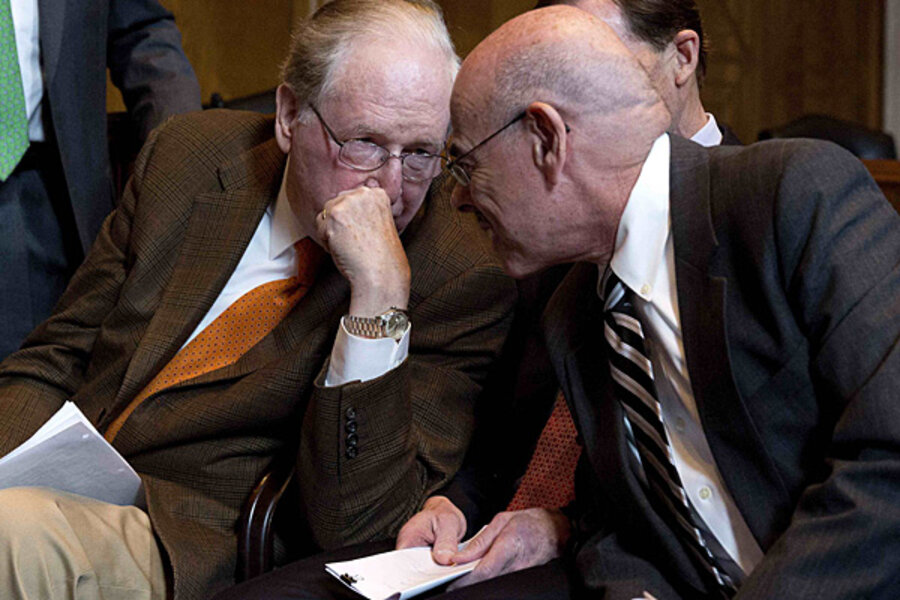The toughest obstacles in the budget debate? Entitlements.
Loading...
Yesterday, I described President Eisenhower’s remarkable success in turning a large deficit in fiscal 1959 into a balanced budget in 1960. It was one of the biggest fiscal consolidations since World War II.
Although it was a very different time, there are lessons relevant to today’s fiscal challenges. One is that a president need not lose popularity just because he fights hard to impose a responsible, austere budget. Another is that Congress and the president can have intense ideological battles without paralyzing government.
Admittedly, this was easier when both Democrats and Republicans were more diverse ideologically and some of the most intense philosophical battles raged within the parties, not between them.
But the biggest difference may be in the nature of government spending. In 1959, Medicare and Medicaid did not exist. Today, nearly half of noninterest spending is in just two areas: Social Security and health. Almost all this spending is on entitlements.
Entitlement programs are not subjected to a budget in the same way discretionary programs face spending limits imposed annual appropriations. Entitlements define an eligible population and describe the benefits to which they are entitled. Then we pay for anyone who shows up to make claims. The spending is on automatic pilot.
Somehow we must find ways to gain control over what are often called “uncontrollables.” If and when we can, the budget will look more like that of 1960 when the bulk of spending was under the direct control of annual congressional appropriations. It may seem impossible, but it can be done.
Countries like Canada and the United Kingdom subject their national health programs to a budget, and the system must live within it. A Medicare budget would be imposed by the “premium support” plans advocated by the Domenici-Rivlin debt reduction commission, and House Budget Committee Chairman Paul Ryan (R-WI) and Senator Ron Wyden (D-OR).
Under such a system, Congress would allocate a fixed amount of money each year to finance income-related subsidies that enable Medicare enrollees to buy health insurance. The hospital and physician insurance parts of Medicare would look very much like Medicare’s prescription drug program and the new health insurance exchanges created by the recent health reform, but with stricter controls over the amounts budgeted.
An alternative approach would subject programs to triggers that would be pulled if the programs become financially unsustainable. For example, a Social Security trigger might gradually and automatically raise the normal retirement age and raise payroll tax revenues whenever the program faces financial problems.
Such triggers have not been very effective in the United States, but more appealing designs in Sweden, Canada, and Germany are worth studying. It is not exactly like imposing a strict budget, but it imposes some discipline where there is now very little.
We cannot exactly emulate the past, and there is no doubt that budgeting used to be easier. But it is also true that the will to govern was much stronger in the past. That will must be renewed. The stakes are high and time is running out.
Rudolph G. Penner, an Institute fellow at the Urban Institute, directed the Congressional Budget Office from 1983 to 1987.







